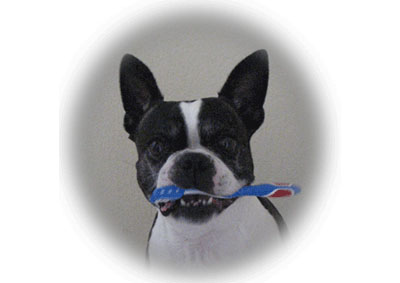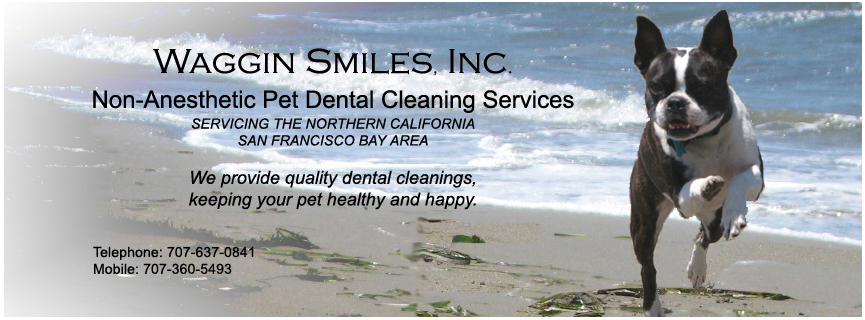|
Brushing
Your Pet's Teeth
Brush
your dog or cat's teeth on days that you will remember, like Friday
night or Sunday night. You'll always remember the end of the week
and the day before the workweek begins. Brushing daily is best but
even a few times a week can make a big difference. Plague builds
up without brushing, causing bad breath, gum disease, and possible
tooth decay.
Use
a soft bristle toothbrush specially made for dogs or cats. The toothbrush
is great for larger dogs; they have longer handles and are specially
angled to reach into a large dog's mouth. A small soft bristle toothbrush
works well on cats and dogs less than 30 pounds. Be sure to use
only toothpaste that is made for dogs. These toothpastes come in
a number of dog or cat-friendly flavors. Never use human toothpaste;
it contains ingredients that may be harmful to your pet.
Find
a position that your pet is comfortable in. This procedure can't
be rushed; your pet will sense it and feel threaten. Be patient
and don't expect too much from your pet on the first few tries.
(Keep in mind this whole process could takes months before you achieve
a complete and successful tooth brushing session).Try sitting or
kneeling down on the floor in front of or beside your pet before
you begin.
Go
step by step: 
Step 1:
Test your
pet's willingness to cooperate. First rub your finger along your
pet's gum lines, both upper and lower using a gentle touch. This
basic step may be the only step you try for a couple of weeks
until you pet is comfortable with you touching his or her mouth.
Step 2:
Then apply
pet toothpaste on your fingertip. Let your pet lick the toothpaste
from your fingertip. If after a few days your pet refuses to lick
more toothpaste after her initial taste, try a different flavor.
Hopefully, you'll find one your pet will enjoy.
Step 3:
When your
pet gets used to you touching his or her gums and mouth, start
using the toothpaste and toothbrush or finger brush together.
You may start by brushing only a few teeth at a time and then
stopping, (This will reinforce that this isn't such a bad experience.)
Start with the canine and back teeth; this is where most plaque
tends to collect. Lift the upper lip. Start lightly brushing by
angling the bristles to reach your pet's gum line. A 45 degree
angle against the teeth and gum line will clear away the plaque.
Next use small circular movements on both top and bottom teeth.
At the beginning of your home care you may note slight bleeding
which should go away as the gums improve. Heavy bleeding may indicate
that you could be using too much pressure while brushing. Consult
your veterinarian if any heavy bleeding continues. The insides
of the teeth should be the last step in brushing and your biggest
challenge. If you are unable to brush the inner teeth, remember
that a dog or cat's coarse tongue will help keep the inner teeth
clean. Only attempt the inner teeth if your pet is extremely cooperative.
Again, brush in small circular movements.
Step 4:
Praise your
pet for being cooperative, so that they know when they are doing
a good job. A special treat given immediately after the brushing
will help reinforce to your pet that this procedure is a fun activity.
There are a variety of chews and treats made especially for dogs
and cats that help remove plaque
|

![]()
